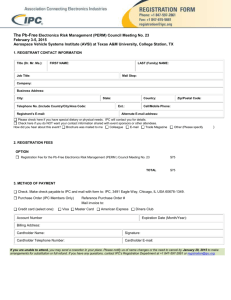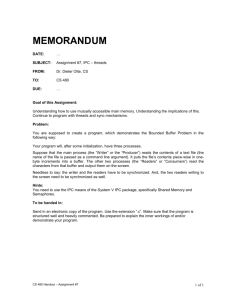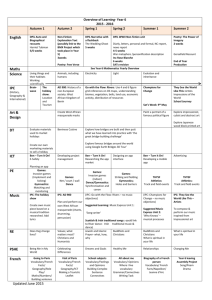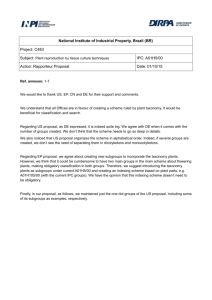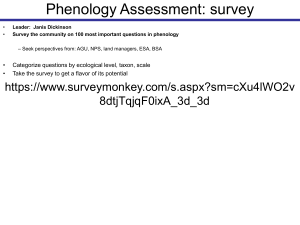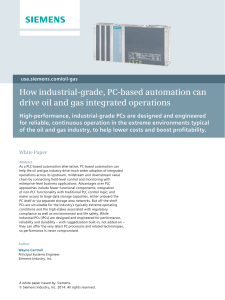Notes - USA National Phenology Network
advertisement
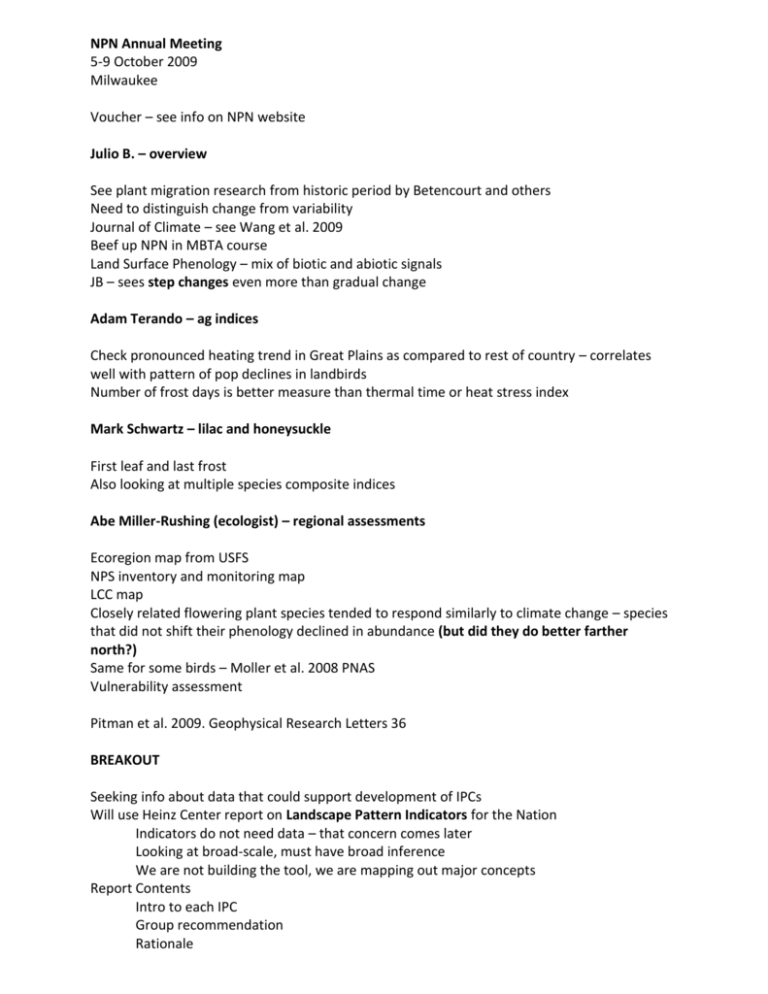
NPN Annual Meeting 5-9 October 2009 Milwaukee Voucher – see info on NPN website Julio B. – overview See plant migration research from historic period by Betencourt and others Need to distinguish change from variability Journal of Climate – see Wang et al. 2009 Beef up NPN in MBTA course Land Surface Phenology – mix of biotic and abiotic signals JB – sees step changes even more than gradual change Adam Terando – ag indices Check pronounced heating trend in Great Plains as compared to rest of country – correlates well with pattern of pop declines in landbirds Number of frost days is better measure than thermal time or heat stress index Mark Schwartz – lilac and honeysuckle First leaf and last frost Also looking at multiple species composite indices Abe Miller-Rushing (ecologist) – regional assessments Ecoregion map from USFS NPS inventory and monitoring map LCC map Closely related flowering plant species tended to respond similarly to climate change – species that did not shift their phenology declined in abundance (but did they do better farther north?) Same for some birds – Moller et al. 2008 PNAS Vulnerability assessment Pitman et al. 2009. Geophysical Research Letters 36 BREAKOUT Seeking info about data that could support development of IPCs Will use Heinz Center report on Landscape Pattern Indicators for the Nation Indicators do not need data – that concern comes later Looking at broad-scale, must have broad inference We are not building the tool, we are mapping out major concepts Report Contents Intro to each IPC Group recommendation Rationale Details of IPC design How will it be presented What does it show List of phenomena that may be suitable for an IPC List of broad questions about the phenomena Rank order the questions Animals Breakout – 6 October 2009 Earlier meetings on developing the network; this is the first that includes animals Participants: Janis Dickinson Wayne Esaias Geoff Geupel Abe Miller-Rushing Alyssa Rosemartin Jake Weltzin Terry Rich Walter Sadinski NPN Animals goal Online with focal species this fall Will include some inverts Recently reviewed by group of ~20 experts Working with NatureServe Marine systems are within the purview Today’s Charge to the Breakout Groups Brainstorming about IPCs List of phenomena that may be suitable for an IPC. Identify phenomena across taxa, across life-history traits, functions in ecosystems (pollinators, seed dispersers), guilds, nest types, etc.; be sure to sample from diverse types of species Identify changes in food resources – drive species actions, movements Reproduction phenomena, vital rates Shifts in egg laying dates Arrival and departure dates Bird range shifts – breeding and nonbreeding (discussion of phenophase) Emergence and submergence of ground squirrels and p dogs, snakes, bears Choose IPCs that are functionally linked, species that depend on each other, predator-prey, those tightly linked to abiotic factors, food-consumer Approach via ecosystem services, not species – food production, pollination, clean water, seed dispersal, carrion removal, waste processing; e.g., select indicators of water quality such as amphibian reproductive success – could be a new framework for organizing IPCs “First” call of amphibians, birds, crickets, cicadas, Essentially every species has a set of responses tied to climate; many responses are similar Implicit that biodiversity conservation is a goal Nectar flow indicated by bees (and 2000 other pollinators) Plant flowering (flowering not necessarily highly correlated with nectar flow) “First” bumble bee – realizing that “first” is correlated with, e.g., population size so not the best indicator; can be dealt with statistically When do Osmia bees get enough pollen to make a nest Last bloom date For IPCs already in place, where are the temporal and spatial gaps? NPN does not have, and does not plan to conduct, a gap analysis of the IPC information currently being collected Many data sets out there that have not yet been analyzed or explored for their possible value as IPC; have not identified the most important questions that might be answered by these data; possible additional goals of the NPA NPN already has a list of all the phenophases that we could monitor, by species Need Vision statement for NPA (see p.2 of Annual Meeting Plan); needs additional statement re providing information/tools for decision support for decision makers and land managers; change “trends” to “changes”? Broad questions related to ES Articulate specific questions from above and rank them Identify indicators for specific questions (from off shelf or new) Integrated across taxa, landscapes, resources, and parsimonious Articulate framework for digging below what IPC is telling us – get to ramifications Evaluation of BBS – is it really measuring the trends; are real trends being masked? Research question Alternate Vision – The NPA informs citizens on important changes in the timing of seasonal events that indicate potential changes in ecosystem services critical to the health and well being of our society and economy. The assessment identifies, evaluates and predicts/forecasts the rate and magnitude of key phenological changes and the potential ramifications of any such changes for society. Questions Which bird species will become non-migratory? Or how are migratory patterns within a species (any species) changing? Changes in timing, populations becoming non-migratory. How are reproductive success and survival (all vital rates) affected by phenological responses/impacts(?) to CC? How are wetlands and ground water changing, relations with ground water, snow, ice, precip - water quality for human and wildlife uses. (ES) How is timing and duration of hydro period affected? How are hunting seasons and game management affected? What are driving variables. Applies to fisheries too. How are insects, disease and other pest outbreaks affected? Big downstream impacts on timber, carbon….animals. Same for infectious diseases and vectors. How do changes in the timing of events and phases for plants (exotic invasions, succession, distributional shifts) affect animal populations? How do we maintain or build elevational and N-S corridors? How do we deal with changing animal distributions or community distributions – refuges no longer having value as refuges for the original target populations? Will we identify phenological management units? How do we adapt management practices to handle changing phenological dependencies? How do changing phenology of food plants (planting, fertilization, harvest) affect animal use of the landscape (movement) and exposure of animal populations to contaminants? How are emergence and submergence (aestivation, hibernation) of ground squirrels, p dogs, bears, snakes etc. affected? How is snowfall timing, accumulation and duration and affected and what are the impacts on animals? How does precipitation timing and duration affect timing, severity and extent of fire? How is timing, severity, extent of fire affected and what are the impacts on animals? How are plant-pollinator interactions affected?

